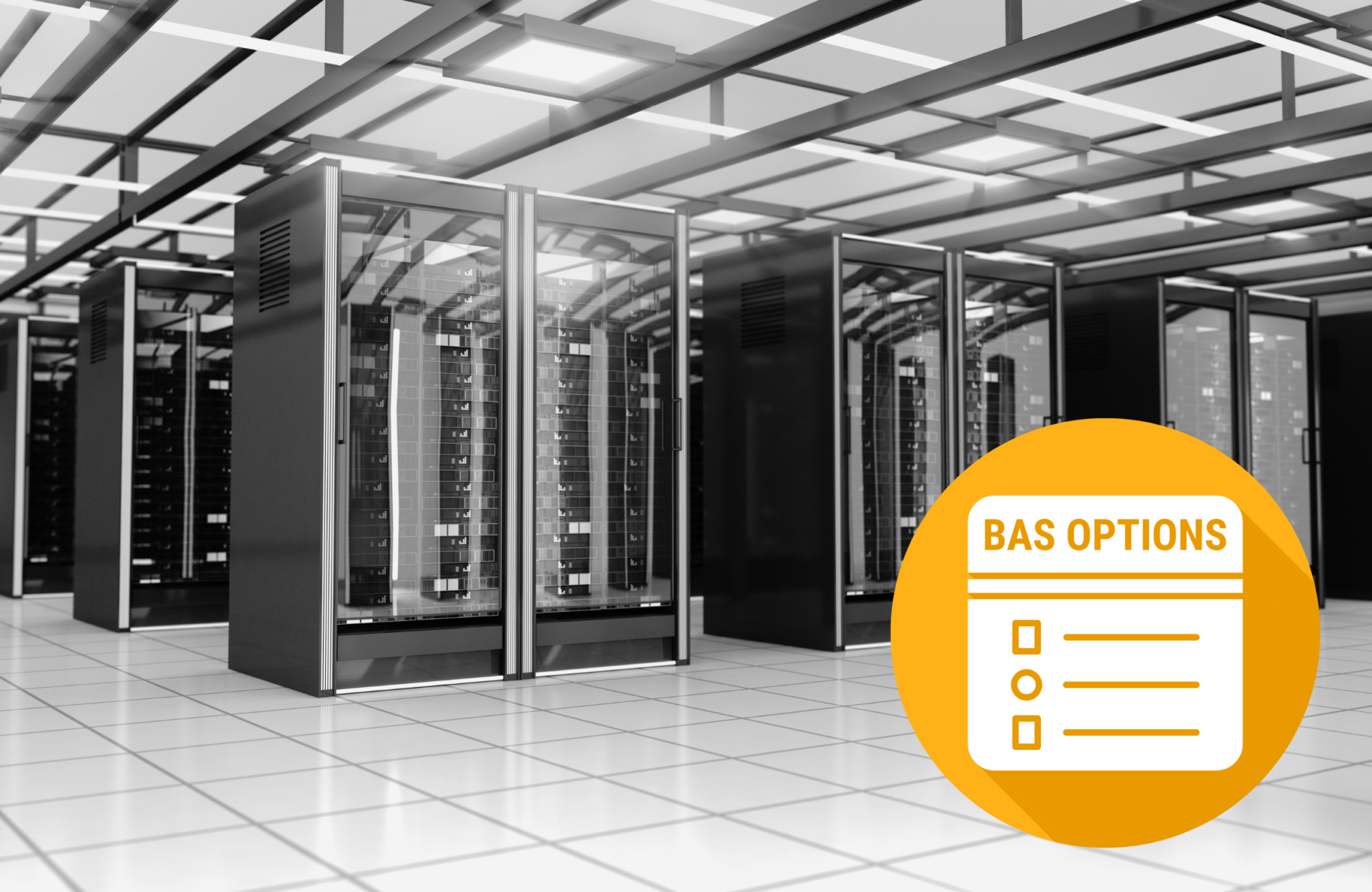A couple of weeks ago, we started a series on debunking technology myths in data centers with the idea a single pane of glass solution is all you need to run your technology most efficiently. And, last week, we look at at why one size does not fit all .
Today we continue the series by looking at a data center myth that you don’t need both DCIM and BAS.
Data centers are the heart of modern IT infrastructure, serving as the backbone for various digital services and applications. As such, they require an intricate web of technologies to manage and optimize their performance.
Two of the most critical technologies used in the operation and management of data centers are data center infrastructure management (DCIM) and building automation system (BAS).
DCIM primarily focuses on optimizing the IT infrastructure, monitoring equipment performance, and managing power and cooling resources. On the other hand, BAS deals with the overall automation and control of a building’s non-IT systems, such as HVAC, lighting, and security.
While these two technologies have distinct functions, the industry has long debated whether data centers need both DCIM and BAS to achieve optimal efficiency and performance. The reality is that the right balance between the two is critical for efficient data center management.
As Vince Koren, vice president and general manager at Albireo, notes, “You actually do need both softwares. Understanding heat load in specific areas of the data center through BAS can provide DCIM users with information critical for energy-efficient operation at the rack level. While the software serves different functions to different stakeholders in the data center, the integrated ability to share critical temperature, flow, and rack loading can net more efficient data center operation and understanding of IT load on building cooling technology.”
In other words, BAS and DCIM are complementary technologies that can work together to provide a complete view of the data center’s performance, enabling data center operators to make informed decisions and optimize resources.
The Data Center Myth of One Over the Other
One of the main advantages of integrating DCIM and BAS is the ability to monitor and manage power and cooling resources in real-time. DCIM software can monitor server utilization and dynamically adjust the power and cooling required to meet the specific needs of the equipment.
BAS can monitor the environmental conditions in the data center and adjust the HVAC system to maintain optimal temperature and humidity levels. By combining these two technologies, data center operators can achieve optimal performance and energy efficiency, reducing costs and minimizing the carbon footprint of the data center.
Moreover, integrating DCIM and BAS can help data centers better understand the relationship between IT and facility infrastructure. By sharing data on equipment performance and environmental conditions, data center operators can identify areas of inefficiency and optimize resource allocation. For example, if the BAS system detects a hot spot in the data center, the DCIM system can dynamically adjust cooling resources to address the issue. By working together, DCIM and BAS can provide a complete view of the data center’s performance, enabling data center operators to make informed decisions and optimize resources.
What DCIM and BAS Together Can Do for Your Data Center
Another advantage of integrating DCIM and BAS is the ability to enhance the security and safety of the data center. BAS can monitor the physical security of the facility, such as access control and video surveillance systems, while DCIM can monitor the performance of the IT infrastructure, such as servers and network equipment. By integrating these two systems, data center operators can ensure that the facility is secure and that critical systems are performing as expected.
Despite the benefits of integrating DCIM and BAS, it is important to note that each data center is unique, and the integration of these technologies should be carefully considered and planned.
The integration process can be complex and may require significant resources, including time, budget, and expertise. Data center operators should evaluate their specific needs and goals and work with experienced professionals to design and implement an integrated solution that meets their requirements.
Why Integrating Both Is Necessary
Integrating these technologies can provide a complete view of the data center’s performance, enabling data center operators to make informed decisions and optimize resources. By combining real-time monitoring of IT and facility infrastructure, data center operators can achieve optimal performance and energy efficiency, reduce costs, and minimize the carbon footprint of the data center.
Ultimately, integrating both DCIM and BAS depends on your data center’s unique characteristics and goals and should be carefully considered and planned.
Check back next week when we look at another data center myth: the system is in and now your job is done. And, if you’d like to learn more about data center myths, download our white paper, “Debunking the Myths Around Data Center Technologies: A Reality Check for the Digital Age.”







